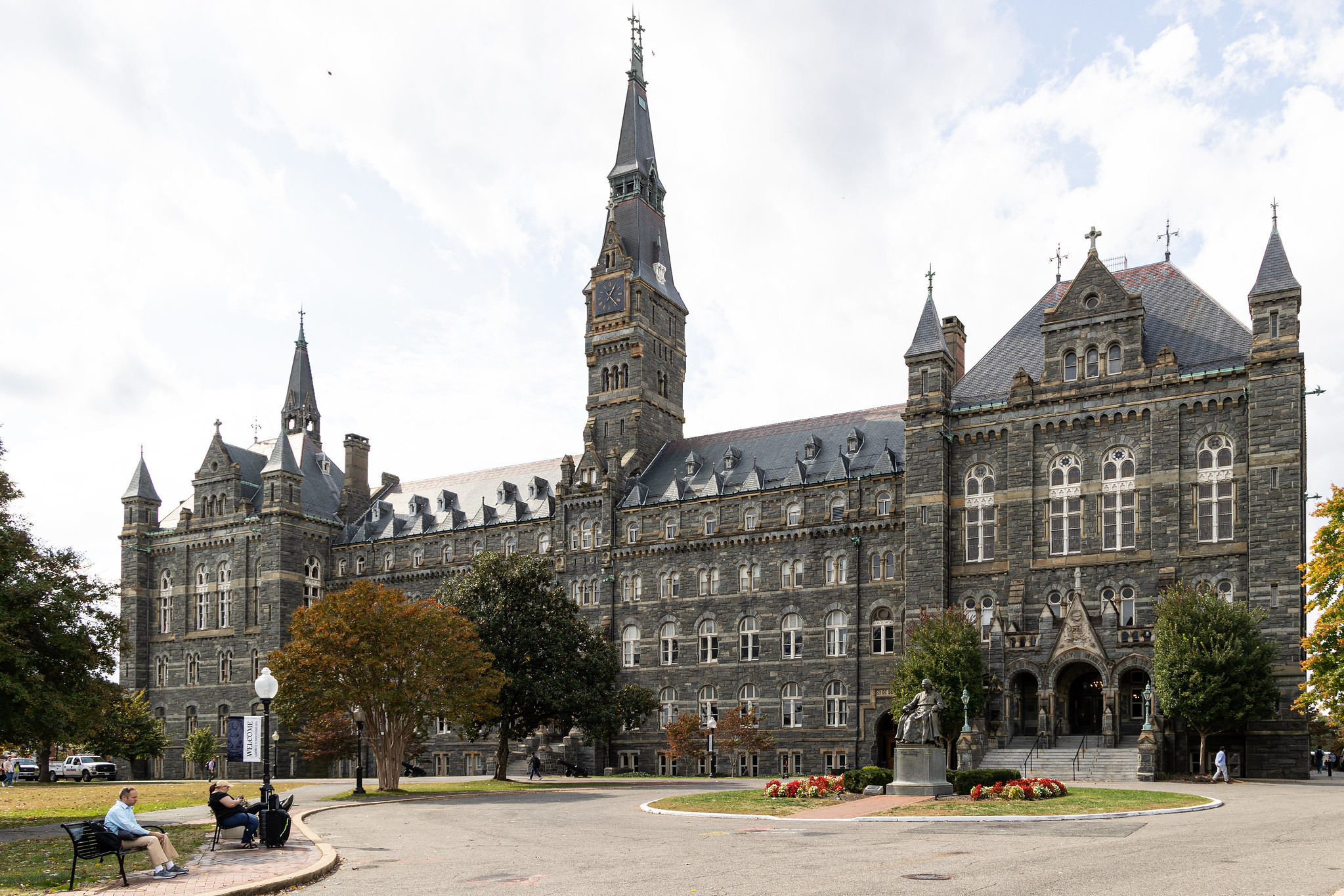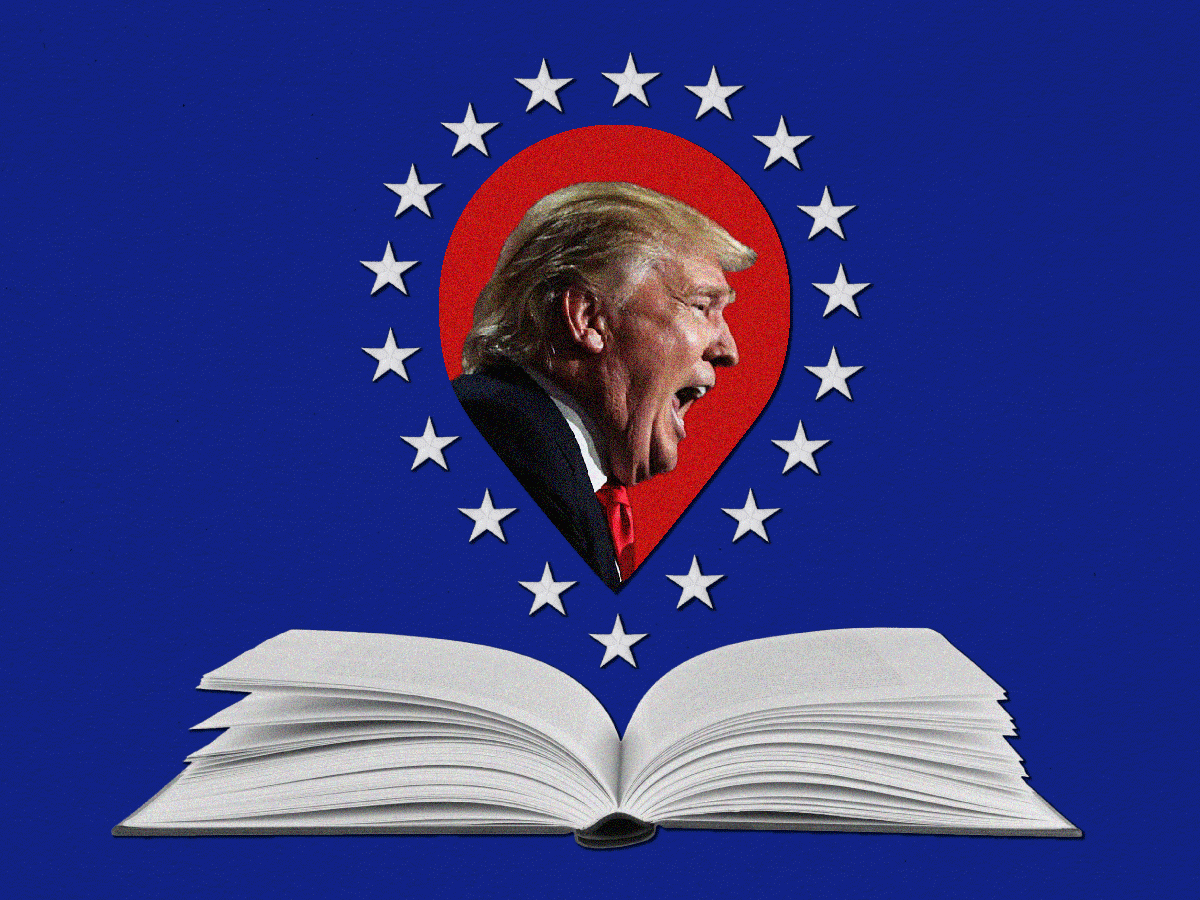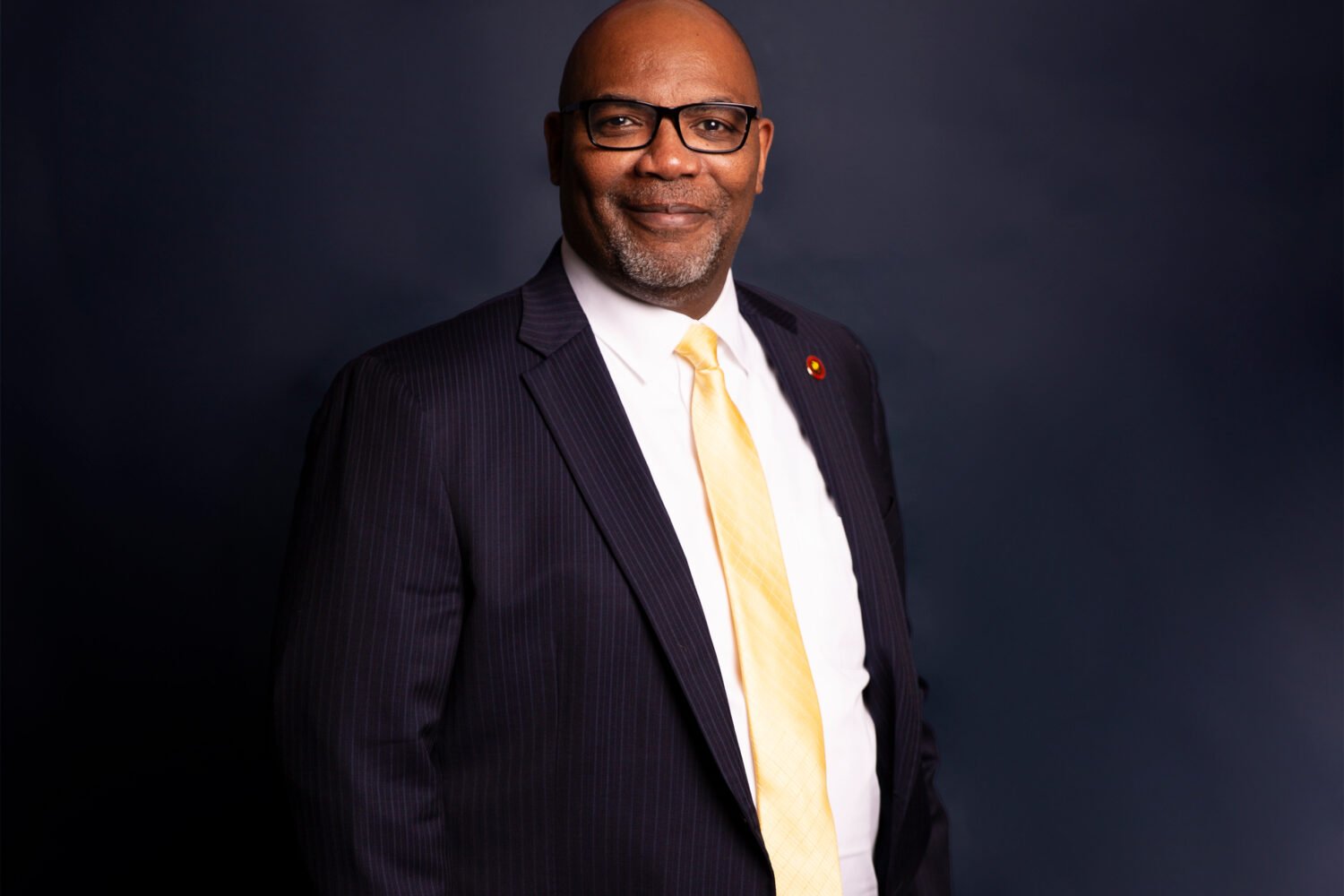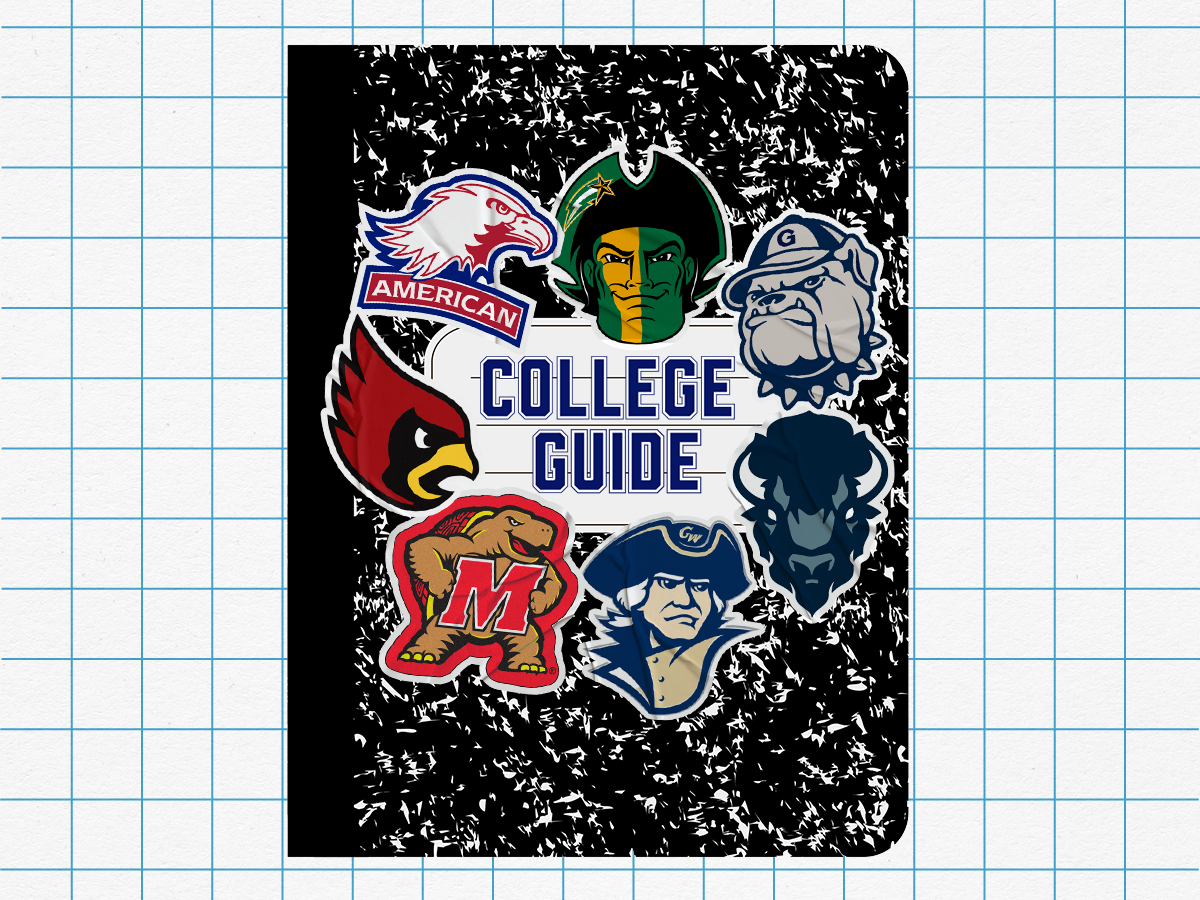This year’s U.S. News and World Report Best Colleges list, released last week, changed the college-ranking game. A shift in methodology shook up many DC-area schools’ positions from last year. While some area schools maintained their rank or rose, others fell more than 30 rungs.
Georgetown University remains the area’s top-ranked school, designated for the second consecutive year as number 22 on the list, and tied this year with the University of North Carolina in Chapel Hill. University of Maryland, College Park rose from last year’s rank of 55 to this year’s 46. George Mason University in Fairfax made the largest leap, rising from 137 on last year’s list to 105 this year, sharing that spot with eight other schools, including American University in DC.
Meanwhile, several area colleges fell, some quite dramatically. George Washington University dropped in its ranking for the first time since 2018, moving from 62 to 67. American University’s shared rank at 105 is a 33-rung dip from its former slot at 72. Howard University saw a setback as well, ranking at 115 compared to last year’s 89, yet retaining its number 2 position in the list of best historically Black colleges and universities. Catholic University of America slipped two spots from 176 to 178. Gallaudet University dropped much further, from 127 to 236. Marymount University in Arlington secured a spot on the top National Universities list this year for the second time, though it fell from 299 to 320.
Rises and drops were expected this year thanks to U.S. News’ new formula. The organization assesses nearly 1,500 schools, producing rankings in several categories but is most known for its National Universities List.
Five longstanding factors in the evaluation process were nixed this year, including alumni giving, class size, high school class standing, proportion of instructional faculty with terminal degrees, and proportion of graduates with federal loans. These measures were dropped in favor of university data that is more universally available. With an eye on outcomes and social mobility, U.S. News also introduced new factors based on first-generation student graduation rates and faculty research.
This year’s new rankings follow an onslaught of skepticism that questioned the credibility and importance of the U.S. News rankings. Notable institutions across the US announced plans to stop sending data to U.S. News in the past year. While many of these were law and medical schools, Columbia University’s undergraduate program declined to send data as well.
DC-area schools varied in their response to their new rankings. George Mason University President Gregory Washington released a statement promoting the school’s placement on the list, which had gone up. Meanwhile, American University’s statement shared their disappointment in U.S. News’ latest list and dismissed its methodology as “unrepresentative.” Similarly, George Washington University’s student newspaper, The GW Hatchet, ran a student op-ed questioning the significance of a school’s ranking, elevating other measures of evaluation instead.
“Colleges are feeling a little bit more emboldened to push back against the ranking in a way that they hadn’t in the last couple of years,” says GWU Assistant Professor of Higher Education Administration Dwayne Wright.
After the Supreme Court decision undermining affirmative action, ranking formulas will probably continue to evolve. Wright predicts college-ranking alternatives to U.S. News that weigh diversity more heavily will proliferate in future years.



















